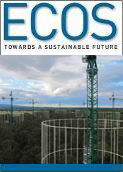
|
Published: 29 October 2012
Smarter ways to spend our water
The Australian Water Association (AWA) has released a new position paper on water efficiency. AWA CEO, Tom Mollenkopf, said it’s important to remember that although Australia has had a recent abundance of rain on the east coast, its climate is variable and volatile.
‘The water efficiency position paper highlights how paramount water efficiency is in how we use our most valuable resource,’ he said. ‘This is particularly so as climate change and population growth will mean that in future more will need to be done with less.
‘The position paper has been developed by some of Australia’s leading water sector experts under the auspices of the AWA Water Efficiency Specialist Network.
‘It has been published to ensure that those who make decisions on how water is delivered, used and managed do so on the basis of sound data, and specifically understand that water efficiency is an effective measure to achieve water security.’
Key points from the position paper include:
-
Water efficiency is an economically viable way to enhance water security in many circumstances.
-
Saving water can reduce capital costs as well as operational expenditure.
-
Saving water is also a viable way of saving energy. Through saving water, there is less need to pump as much water, heat as much water, and expend energy on building new infrastructure and on maintaining existing systems.
-
Water efficiency also makes sense in its own right and is worthwhile even when water security is not a goal; water efficiency can increase the availability of water for environmental, economic, cultural, spiritual and aesthetic purposes.
-
Australia’s climate is highly variable and emerging pressures such as population growth will affect the security of water supplies in ways that are difficult to predict. A changing climate will exacerbate these pressures. Flexibility is required to deliver effective solutions, and opportunities to achieve greater water efficiency must always be part of these solutions.
-
Water efficiency must be considered equally with supply-side options in the development of any strategy to improve long term water supply security.
-
In line with the 1994 COAG Water Reform Framework and the National Water Initiative, all costs associated with water supply should be internalised. This would facilitate comparison of demand and supply-side water security options.
Source: AWA




